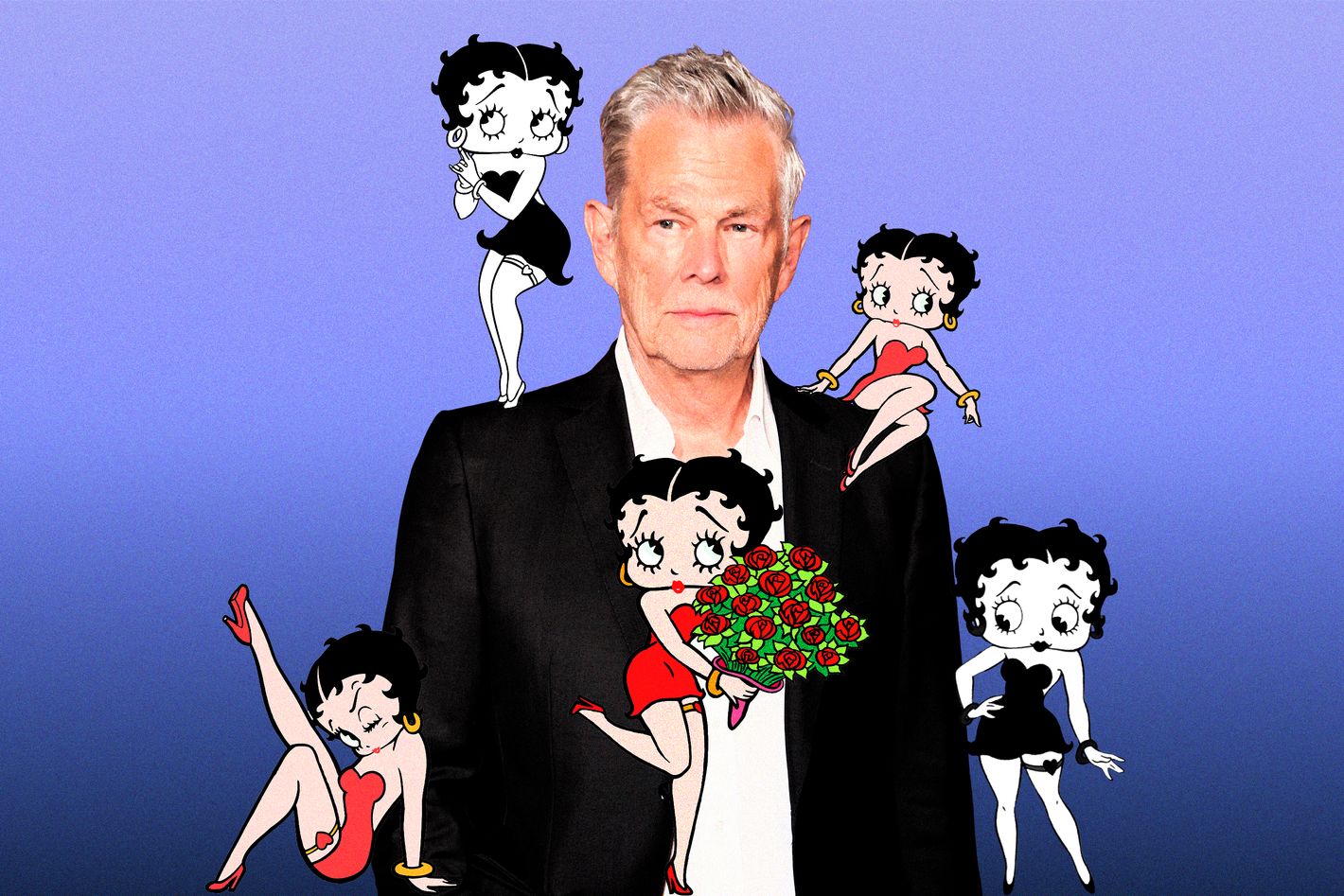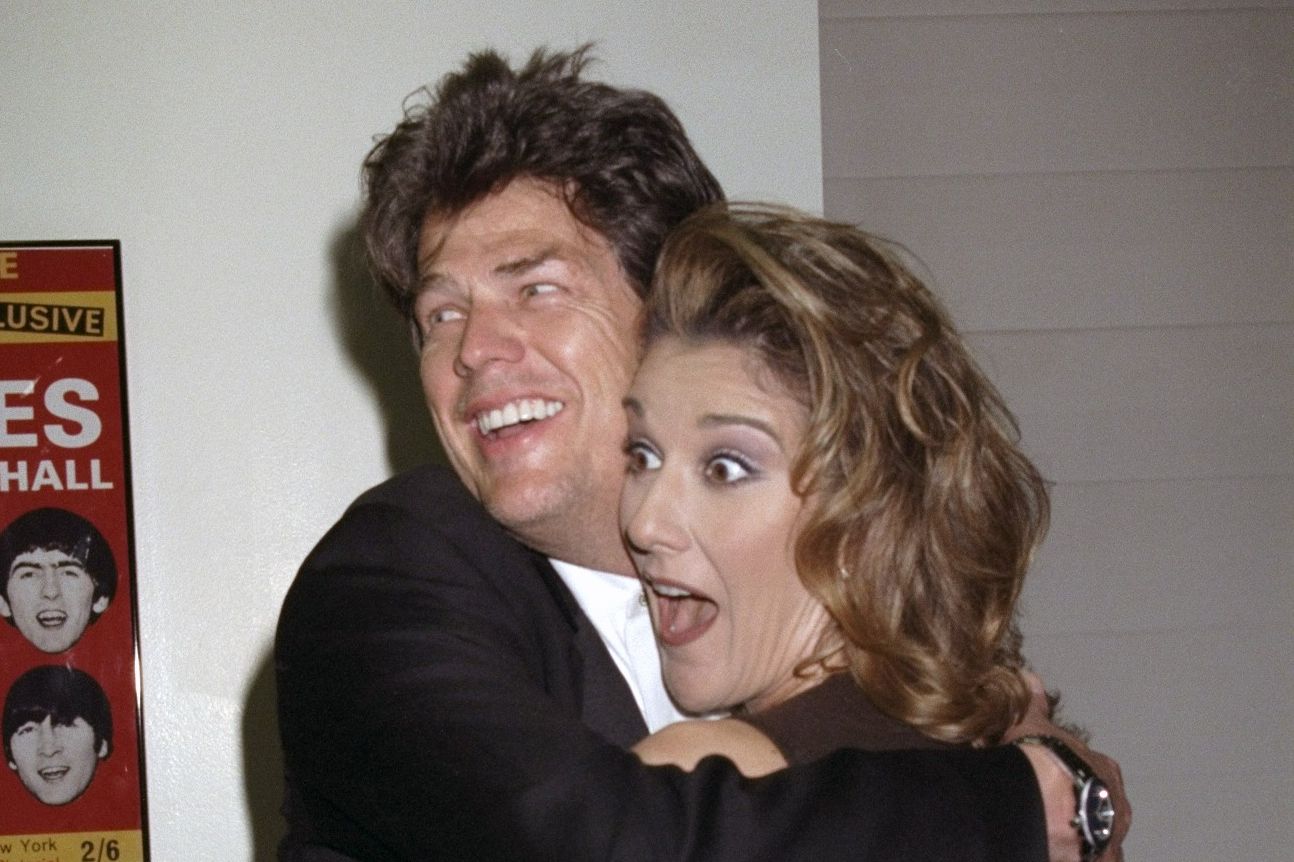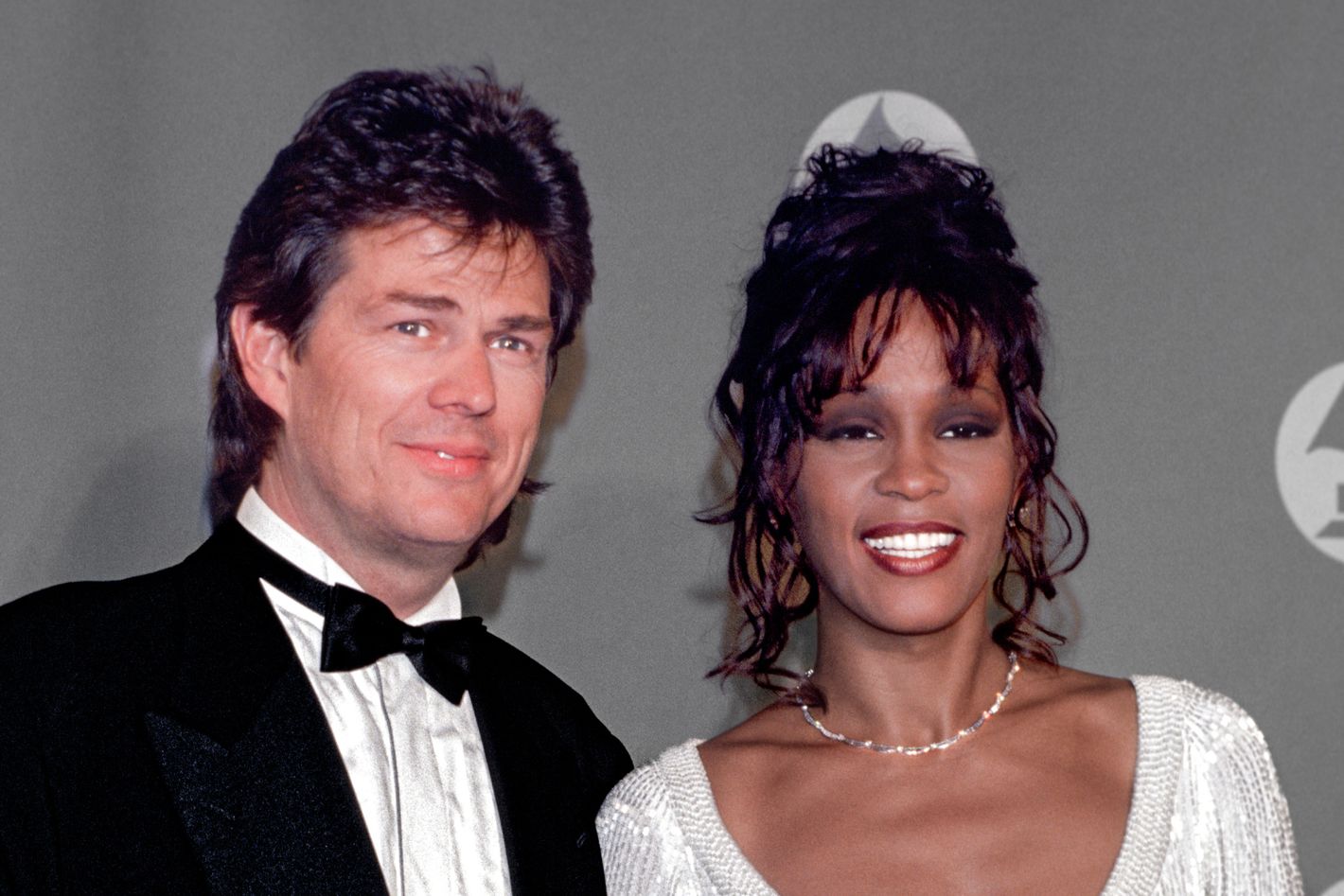

How does one write a showstopper for a diva? For decades, David Foster has been uniquely equipped to answer that question, thanks to his work with powerhouses such as Whitney Houston, Céline Dion, and Aretha Franklin. But nothing — not even studio sessions with Barbra Streisand — could’ve prepared him for making the switch to the Technicolor world of Boop! The Musical. To better understand his new “It” girl, Foster, working in tandem with lyricist Susan Birkenhead, spent hours watching the original Betty Boop cartoons from the 1930s. “The cartoons were perplexing to me because the music they used is so far beyond what I would relate to,” he explains. “Don’t get me wrong, I loved it. I just didn’t have any idea how to make that kind of music. I had no fucking clue what I was doing.”
Foster eventually found a comfortable groove by drawing from inspirations that have followed him since childhood. He also sought the guidance of a few Broadway bigwigs, who gave Foster the confidence to leave his self-proclaimed “schmaltzy” comfort zone behind and try his hand at more ambitious arrangements. By the end, he estimates that he wrote 50 songs for Boop!, 20 of which made the production’s final cut. (“I now have a drawer full of melodies that are looking for new homes,” he says.) The result is one of the most bizarrely entertaining musicals of the season, and here, Foster boop-oop-a-doops his way through its most important influences.
His dad
My father was an amateur pianist. It wasn’t his job. He just enjoyed playing. His specialty was the standards of the ’30s and ’40s and stride, which is like honky-tonk or barroom piano. He patiently taught me these old songs almost note for note. God bless him, man. It must’ve been excruciating for him. The only payoff was I did get pretty good at it. That barroom style played right into the music surrounding Betty Boop. I’ve used it in other places too, like with Barbra Streisand, but it’s more of a memory bank that I loosely draw from.
Killing his song darlings
Cartoon music is very, very complicated. When somebody like director Jerry Mitchell says, “No, that song doesn’t fit the musical,” your first instinct is to respond, “What do you mean? This is a great song.” The best thing Andrew Lloyd Webber told me was, “You’ve got to be prepared to throw out your best song.” I said, “Even you, Andrew, after 20 musicals?” “Yup, even me.” And he was right. I threw out my best song. It was called “Yes, I Remember It.” It was a duet between the older couple, Grampy and Valentina. I wrote a song years ago called “The Prayer” for Céline Dion and Andrea Bocelli. It was in that vein. I thought “Yes, I Remember It” was incredible, but nobody else on Boop! did. Well, they did think it was incredible, but it just didn’t fit.
Marvin Hamlisch and Stephen Sondheim
Marvin was a friend of mine. I loved A Chorus Line so much and everything he did. He wasn’t even alive when I started this, but years ago, he showed me a little trick on the piano that was in the “Broadway style.” Just like my father, he had the patience to teach it to me. It’s a style of piano playing that was sort of honky-tonk, sort of A Chorus Line–y and sort of Sting-like. The movie Sting, not the incomparable artist. So I logged that in my brain thanks to Marvin.
I later cold-emailed Stephen Sondheim to get some advice from him. He answered, which was kind of crazy. I had said, “You don’t know me, but for reference, I produced the song ‘Somewhere’ on Barbra Streisand’s album that you wrote for West Side Story.” And he wrote back, “Don’t be so fucking modest. I know who you are.” We never got to meet, but it was cool to have that exchange because I think he’s brilliant. “Send in the Clowns” is my favorite song. Throughout the process of Boop!, I kept thinking, What would Sondheim do here? The problem is, you don’t even get close. There’s a couple of songs where I was like, Okay, this intro, I’ll try and be like Sondheim. They say that amateurs steal and professionals borrow. So I guess I borrowed quite a bit. And it still didn’t work. But I thank Sondheim for being in my ear to deviate from what I know best. There’s one song Betty sings early on where she just wants to be an ordinary person for a day. It’s called “Ordinary Day.” I like it because we’ve already established I’m pretty schmaltzy with my music. Rolling Stone called me “the king of bombastic pop kitsch.” Some of the songs in Boop! are pretty big, but “Ordinary Day” is a song that’s a little quirky and a little edgy. The melody is a little different.
Timelessness
Egotistically, I wanted to write a score where you couldn’t pin down the time period. It could have been 100 years ago or it could have been tomorrow. Not to say “top 40” tomorrow, but that you couldn’t quite guess the time frame. It’s like architecture — sometimes in a building, you can’t tell when it was built. Who knows whether I succeeded or not.
Musical-score potpourri
I knew enough about Broadway to be dangerous, but not enough to be great. I listened to South Pacific and Oklahoma! fairly frequently. I listened to Wicked because I think Stephen Schwartz did a brilliant job. I’ve become friends with Benj Pasek and Justin Paul, the two guys who wrote The Greatest Showman and Dear Evan Hansen. Their stuff is so clean and so good. I also listened to the music from Smash because my wife, Katharine McPhee, was in the television show. I love Marc Shaiman and his song “Let Me Be Your Star.”
The jazz greats
My wife gets so annoyed because she’ll get in my car and I’m blaring Miles Davis. I’m also heavily influenced by Bill Evans and Oscar Peterson, both great jazz pianists. There was a period in my life, from age 13 to 20, where I really thought I was going to be a jazz musician. But I just wasn’t good enough. Just like I wasn’t good enough to be a great classical pianist. I’ve always loved jazz and marveled at it, and I wish I could play like those guys, but I can’t. Between the likes of Keith Jarrett, Chick Corea, and Herbie Hancock, I did a lot of listening. That’s where I was able to come up with Boop!’s “I Speak Jazz” and “My New York.” Admittedly, it’s more in the Broadway jazz style. It’s not real jazz. It’s palatable for the masses. I’m not fooling myself into thinking that I’ve come up with a John Coltrane standard, but those artists came right to the forefront of my head when I was writing Boop!.
Scatting
Songs get thrown out even at the last minute. We’re opening tomorrow night. “Yeah, but that song sucks, so you’ve got to write a new song in a few hours.” It was like that with “Where Is Betty?” We had another Act Two opening song in a different style. In Chicago, where we did our previews, it just never worked. I would sit there night after night going, “God, are they going to keep this?” They kept it for a while, and then, at the end of the Chicago run and when we started rehearsing for New York, Jerry was like, “That song has got to go.” I was happy he made the decision, but of course it means a lot of extra work. I tried to write another song. Jerry said, “No, that song’s no good either.” He actually sat down with me with a tape recorder and said, “This is how I feel the song should go.” He proceeded to give me a nonsensical sort of scatting, but it all made sense. Boop boop a doop. I took his template. I guess I could admit it here — and I’ll never give it to him — but theoretically, he should be a co-writer on the song because he gave me the rhythms.
His personal divas


The opening song, “A Little Versatility,” I wrote about ten years ago. I saw Betty being vulnerable in the beginning and then busting out for the rest of the song. In my pop music, I’ve always tried to make moments where the audience goes “yeah!” in the middle of the songs. The extreme examples would be when I worked on “I Will Always Love You” with Whitney Houston and “All By Myself” with Celine Dion. It stops, there’s the weight, and boom. That’s a moment I created in the songs — imagining the audience would jump to their feet when it happens and they actually do. With Boop!’s “A Little Versatility,” I tried to have those moments when the audience would gasp and applaud. I’m also a sucker for key changes. There’s about three key changes in that song, and it adds to the excitement. There’s a song in the second act, the 11 o’clock number, called “Something to Shout About.” I absolutely imagined that I was writing and making a record for Céline or Barbra. I still have a dream that one of them will sing it one day.
Related

Latest News
For Sale! 2016 Sea Ray 350 Sundancer – $180,000
Reel Deal Yacht is pleased to feature a meticulously maintained 2016 Sea...
Nautor Swan Unveils Five Maxi Yachts and the New ClubSwan 43 at Palma Events
Nautor Swan at the Palma International Boat Show: A Showcase of Excellence...
China Watch Market Outlook and Company Analysis Report
The Rising Tide of the China Watch Market: Trends, Challenges, and Opportunities...
J.J. McCarthy is ready for the job and the pressure of taking over as QB for the Vikings
While everyone else in the NFL ‘s record crop of first-round quarterbacks...
Aaron Ekblad suspended 2 games for elbow during Game 4
The Florida Panthers will be without a key defender as they look...












Leave a comment